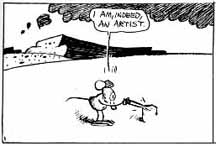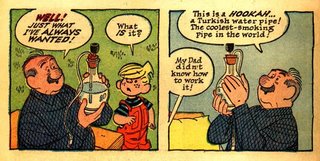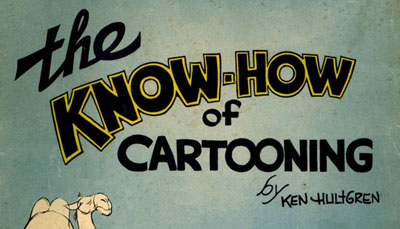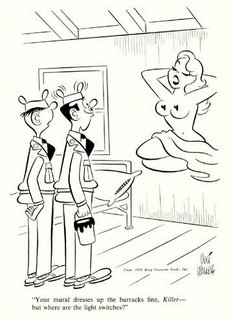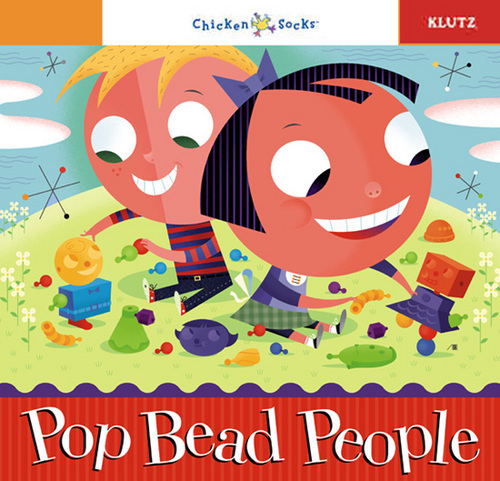Lee Lorenz, cartoon editor of the New Yorker since 1973, says, "The biggest change over my career - I started here as a cartoonist in 1958 - is that the generation of cartoonists that came to prominence in the sixties and seventies all do their own writing. For the first twenty-five years of the New Yorker, captions were nearly always written by people other than the artists - writers on the staff or outside gag writers. -- Behind the Cartoonist by Sarah Werner, Smithsonian Magazine, June 1995
Mr. Lorenz mentions the above in his audio portion of the Donald Reilly slideshow as well. My pal Tony Murphy, whose "It's All About You" comic strip can be seen in free daily papers in NYC and Boston, and now online, asked my opinion about this. He wrote:
I'd be interested to know more about why the NYer editor then was deciding he wanted cartoonists who could write their own material. In other words, why didn't that happen ten years earlier -- or later?
A good question! I don't know, but being a good American, I'm lousy with ill informed opinions and my right to pontificate about 'em
In 1925, when the NYer mag began, Harold Ross, who as we all know started the magazine, wanted a different type of cartoon. So many of the cartoons had dialogue back then. Not just the one line, but 2 or more lines of dialogue. It was clunky looking.

Voice from bank - Hey, mister, your oars are driftin' away!
Contented lover - That's all right. We don't need 'em any more.
These cartoons are from Judge magazine, a leading humor mag, created by Puck magazine contributors who jumped ship to create a rival humor magazine.

A FOURTH OF JULY OUTING
Gamin - Carry your bag for a nickel, mister.
Pater - No, never mind, boy.
Gamin - Carry the kind fer a quarter.
(Ahh, the street urchin gag! So rarely seen these days!)
E.B. White is generally credited with crafting the typical one-line New Yorker style cartoon. Cartoon captions were routinely handed over to White or Thurber for "tinkering."
It was never easy, and still isn't, for a new artist to break in to the New Yorker. Some of those whose names have become well known tried for months, or even longer, sending in dozens of rough sketches week after week. If an unknown's caption, or sketch, seemed promising, it was often bought and turned over to an established staff cartoonist. Arno usually got the cream of the crop; the wonderful Mary Petty has never worked from any idea other than her own; James Reid Parker did most of Helen Hokinson's captions; and other artists either had their own gagmen or subsisted on original inspiration, fortified by captions and ideas sent in by outsiders or developed by the staff. -- The Years With Ross by James Thurber
I believe that since the NYer was run by writers and editors, then the approach with cartoons was the same: Great cartoons are not written, they are rewritten and rewritten and edited and poked and prodded at by many on the staff. It's odd to think that Charles Addams had writers who would write for his distinctive style of humor. But this is all part of the branding of these different cartoonists. James Reid Parker, who wrote the introduction of The Hokinson Festival cartoon collection, is cited on the book jacket as the guy "who wrote most of the original captions" of her cartoons. Gag writers are, as Ms. Wernick writes, "an open secret of the cartoon business."
Most gag cartoonists buy some of their ideas from outside sources. They pay the writer 25 percent of what the cartoon earns and keep 75 percent for themselves. Only the cartoonist signs the cartoon. -- Cartooning by Roy Paul Nelson
"Any professional humorist is out of his mind if he doesn't surround himself with talented writers. Otherwise you get to the bottom of your own barrel too quickly," says Hank Ketcham in Sarah Wernick's Smithsonian article.
One cartoonist I know who uses more than 3 dozen gag writers, says they allow him to be more prolific. And a gag writer colleague of mine would point out that the cut for gag writers is now 30%. Or at least it is in NYC.
I don't use gag writers myself, despite getting approached by them. I like Dave Coverly's note to gag writers at his Speedbump site:
Note to Gag Writers: I don't buy cartoon ideas. It's nothing against you, I'm sure you're damn funny. I just don't. I like the daydreaming part of my job too much.
Bob Mankoff, who took over the cartoon editor position at the NYer after Lorenz, says that there are people that like to draw and there are people who like to write. Cartoonists are the rare combination of those two types



















